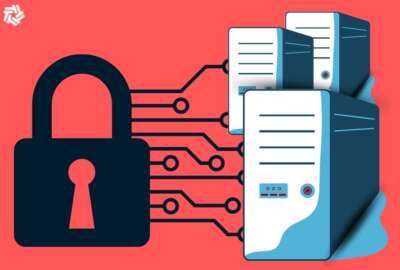At NIH, ‘unified communications bridges the gap’ for collaboration
Unified communications involves making sure everyone gets the message, no matter how it was sent. At the National Institutes of Health, it means combining phone,...
Unified communications involve making sure everyone gets the message, no matter how it was sent. At the National Institutes of Health, it means combining phone, video, text and more to link doctors, administrators, researchers and patients with each other and outside organizations like universities.
“There’s a lot of collaborative efforts that are going on, and unified communications really bridges that gap,” Todd Cox, chief of unified communications and collaboration at the Center for Information Technology at NIH said during a Dec. 6 FCW webcast.
At the National Cancer Institute, a researcher looking at kidney cancer connects via high definition video to three different universities that are conducting related research. Representatives from the universities used to come to NIH to meet with him, until their travel budgets got cut. Cox said these collaborations are daily occurrences at the Cancer Institute.
Nanotech researchers at NIH were able to remotely attend a conference in South Korea, Cox said, using video conferencing technology. It had never before been cost effective to send them there in person.
Closer to home, Cox said NIH administrators and technicians use these technologies to converse on a daily basis with employees.
“It really improves that experience,” he said. “When you have that conference call, if you have the video part, you can see the body language, you get to see the nuance of the conversation, it gives a much better experience, I believe.”
Meanwhile, a back surgery was being broadcast from a UCLA medical center as part of a collaboration with eight different countries. But one doctor who was supposed to be present got stuck in Chicago. Through a unified communications effort, he was still able to narrate the surgery from his hotel room.
Cox said these communications technologies required certain behavioral and cultural changes to really take root in the agency. He said he sees incremental gains in their use.
Recent telework requirements, including the government mandate for certain agencies to reduce their space by up to 20 percent, have been important drivers in making these services more ubiquitous throughout agencies, he said.
At NIH specifically, scientific collaboration is another important factor. NIH is made up of 27 disparate institutes, each of which has to collaborate with the others and with various specialists and outside organizations that support or inform their research. Unified communications allow the researchers to be closer without having to come together physically.
It also makes grant review and project oversight easier, since no travel is required. Training, especially through virtual participation in conferences and workshops, benefits from reduced travel costs as well.
Conversely, it allows NIH to raise its profile because more organizations are able to remotely attend classes and conferences held on campus.
These are all ways in which unified communications help NIH to improve its daily functions and collaborations.
“The nirvana here is that you want to be able to go into a conference room, connect up to a web conference, and have your meeting,” Cox said. “That’s not the case right now, but you set yourself a goal … you set a plan, and you execute on it.”
Most of the early challenges he experienced revolved around getting people to try the new technologies, he said.
For example, when the Cancer Institute was building a new building, Cox and his team decided to install a new suite of unified communications technologies rather than plain telephones.
“We noticed as we were putting in these — at the time we called them ‘high-tech phones’ — people were taking their cameras and pointing them to the ceiling,” Cox said. “They didn’t want to be on camera. They were just used to having a handset.”
He said that resistance to change has been the biggest challenge he’s had to face so far.
“One of the key benefits with unified communications is that you can put the software on your laptop, or iPad, or Surface, or any mobile device, and no matter where you go, you are connected to your environment,” Cox said. “But we were really finding that even though people had these tools, they still wanted that handset. That was a huge challenge that we did not anticipate.”
Copyright © 2024 Federal News Network. All rights reserved. This website is not intended for users located within the European Economic Area.
Daisy Thornton is Federal News Network’s digital managing editor. In addition to her editing responsibilities, she covers federal management, workforce and technology issues. She is also the commentary editor; email her your letters to the editor and pitches for contributed bylines.
Follow @dthorntonWFED






